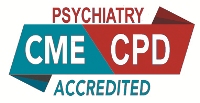Jorge Tomas Balseiro Estevez
Georgetown Public Hospital, Guyana
Title: Profile and Psychosocial factors associated with suicidal behavior in Guyana
Biography
Biography: Jorge Tomas Balseiro Estevez
Abstract
Statement of the Problem: The WHO report, published in 2014, gives Guyana in the top worldwide with an age-standardized suicide rate of 44.2 per 100,000 inhabitants.
Methodology & Theoretical Orientation: A nationally represented sample of 899 cases involved in suicidal behavior, 555 who committed suicide and another 344 attempted suicides from 2010-2012, were surveyed using an epidemiologic study to identify the psychosocial factors associated.
Findings: As results founded most affected in suicide deaths is 20 to 49 years (50%). Males commit suicide more frequently with a ratio of almost 4:1. Most commonly used methods are poisoning (pesticide/herbicide) more than 65% of cases, followed by hanging (>20%). East Indians account for >80%; geographically concentrated in regions 6, 5, 4, 3 and 2. In suicide attempt were collected more detailed information, where age groups more affected are 12-18 (30%) and 19-25 (>20%). Females attempt suicide more frequently (>75%) with a proportion of 3:1. East Indians account for >50% and Afro Guyanese provide 25.9% of cases. Similar geographical area is affected in suicidal attempts and isolated cases are reported from rest of regions. More cases of suicidal attempt were single (60%), without children (68%), living with family (>50%), belong to Hindu (>30%) and Pentecostal (>30%) religions, less common frequent are other factors as low income and unemployed. Persons involved in suicide behavior are related with hopelessness, depression and uncontrollable anger in more than 60% of cases of this study, usually associated to family discord (31%), couple problems (25%), domestic violence (11%) and interpersonal conflict (16%). Other risk factors identified were, acute emotional distress and depression (36.6%), the accessibility of lethal substances (herbicides, pesticides and others) in the 63.7% of cases, alcohol and drug use (32%), family dysfunction (34.5%).
Conclusion & Significance: Profile and psychosocial factors associated to suicidal behavior were identified. Implementation of the national suicide prevention plan designed as imperative of the problem.

